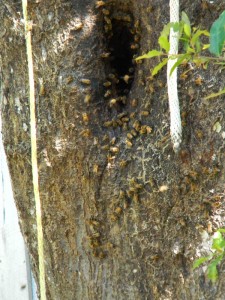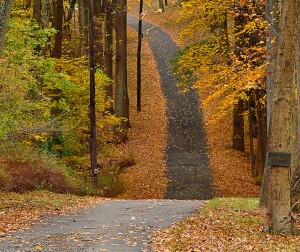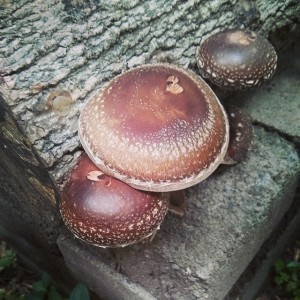When I first bought my homestead there were a couple dozen oak trees in the yard. Unfortunately, they were water oaks. Those are the kind of oaks that spontaneously fall over and crush things.
Since I needed sunshine in order to plant my food forest and create my garden beds – and since I was terrified of multi-ton wrecking logs falling through my roof – I hired a local tree removal company to come over and take out about half of the oaks in my yard.
I wanted space for something productive – not just a lousy group of oak trees!
In retrospect, I think I had too many trees removed. The more I’ve researched ecosystems, forests, trees and fungi, the more uses I’ve found for oaks.
What are the uses for oak trees?
Let’s do the fun internet thing and make a list!
Oaks Yield Mushrooms
Oak logs can be cut and used to grow a variety of mushrooms, including gourmet shiitakes.
Not only are mushrooms a valuable crop, they also have a variety of health benefits. Interestingly, many are also high in protein and fiber. Bonus: mushrooms can fight cancer.
Beyond the mushrooms you cultivate on logs, there are also edible mushrooms that live in a symbiotic relationship with oak trees, such as some boletes and chanterelles. I found these large edible boletes in the grass beneath some live oaks:
Those are edible… and I ate them. If you have oaks, chances are you have edible mushrooms that live in harmony with their root systems.
Interested in learning to SAFELY forage for gourmet mushrooms? I created a suggested mushroom hunting book list for you.)
Oaks Feed the Soil
Oaks (and other trees) are humus-creating machines.
The oaks in my yard are constantly dropping leaves, branches and moss. Anyone trying to keep a perfect lawn under a big tree knows how mush effort it takes to keep things neat. Why not use the debris to feed your garden, orchard or food forest?
Think about it: a tree expends a lot of effort gathering nutrients from deep in the soil as well as building tissues with sunlight. All that hard work shouldn’t go to waste. Quit raking up and tossing your leaves – and quit burning them. Feed a compost pile instead or use them as mulch. (Oak leaves take a while to decompose, so I prefer them as mulch or as additives to sloooow compost piles.)
Oaks Host Useful Animals
I know – the first animal you think about when you imagine an oak hosting critter… is squirrels.
Though you might not think squirrels are “useful,” they are a good source of protein. They’re also tireless re-planters of the forest, thanks to their habit of burying nuts and forgetting where they put them.
Beyond the dubiously helpful squirrel, oaks also host a wide variety of insect-eating birds, tree frogs, spiders, snakes and owls. All of these are useful in a healthy ecosystem and bring balance to your yard. The birds clean up insect issues, the frogs eat insects as do the spiders, the snakes keep the rodent population under control and the owls do their part to cut down on the mice in your fields.
Another useful creature often living in oaks: honeybees!
 I’ve seen bees living in oak trees on four different occasions. Before you chop down an oak, make sure you’re not taking out a hive of helpful pollinators!
I’ve seen bees living in oak trees on four different occasions. Before you chop down an oak, make sure you’re not taking out a hive of helpful pollinators!
Oaks Produce Free Livestock Feed
I’ve eaten acorns on a few occasions. The acorns on some white oak trees are almost sweet enough to eat raw; however, most acorns are bitter and require quite a bit of processing to become palatable. I’m not that patient.
Fortunately, acorns can feed more than just people. In fact, oak trees (often along with mulberries, a spring crop) used to be planted on purpose near pig pens in order to help fatten up the pigs on the fall drop of acorns.
Oaks Create Microclimates
If you’ve ever had a tree shading your house… then taken that tree out… you know the big difference in local conditions a tree can make. Some oaks are really great shade trees, such as the majestic and spreading live oak.
I’ve sat beneath the shade of large oaks growing in tropical South Florida on a summer day and felt refreshed. The canopy of an oak tree will also protect nearby plants from extreme cold, even when the tree is leafless in winter. Even better, having some oaks on your property will add moisture to the air, since they’re constantly pumping up water from beneath the ground and releasing it into the air through evaporation.
So, before you take down that oak tree in your yard, think about the many uses for oak trees first. And if you do go ahead and chop it down, don’t waste the leaves and logs!
Shiitakes and compost, baby. I just wish I’d had better sense back when I had my oaks taken out.



